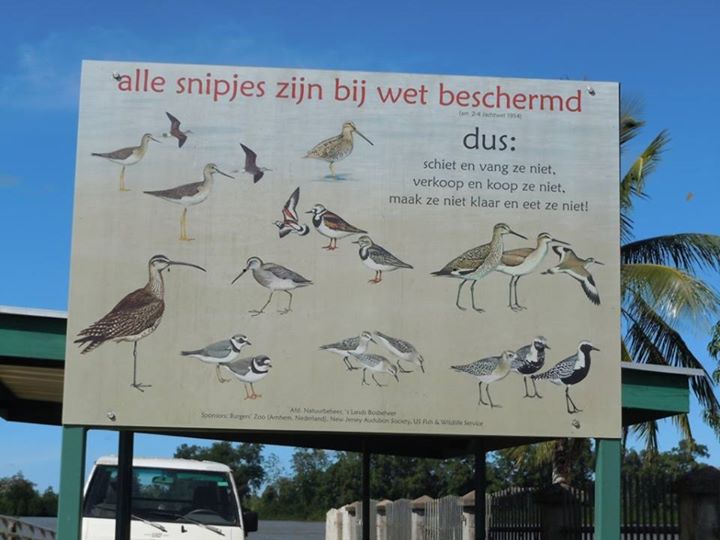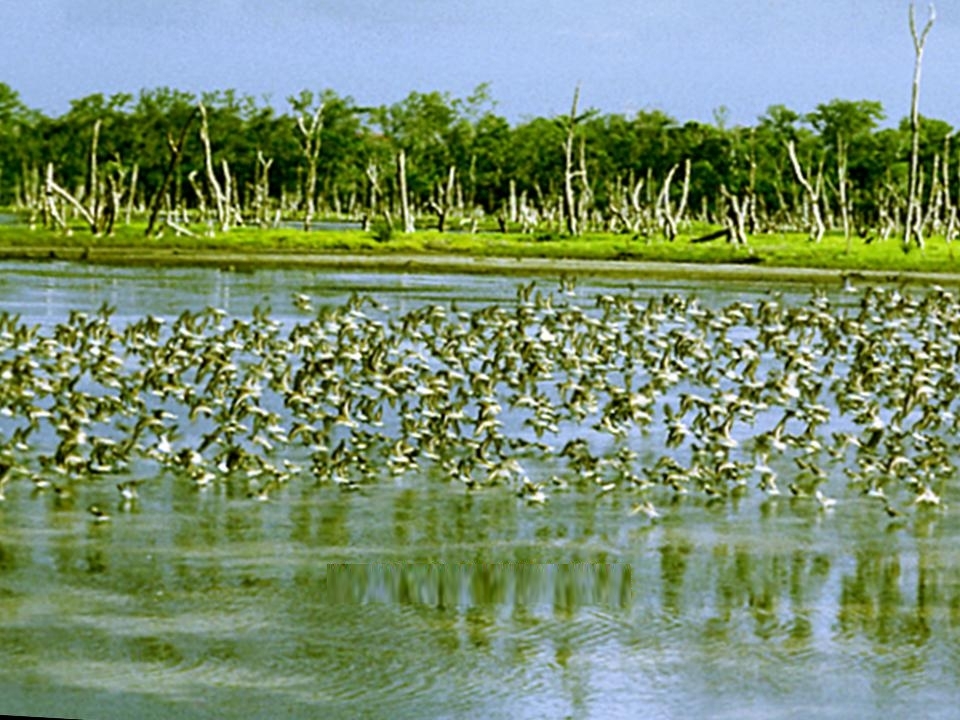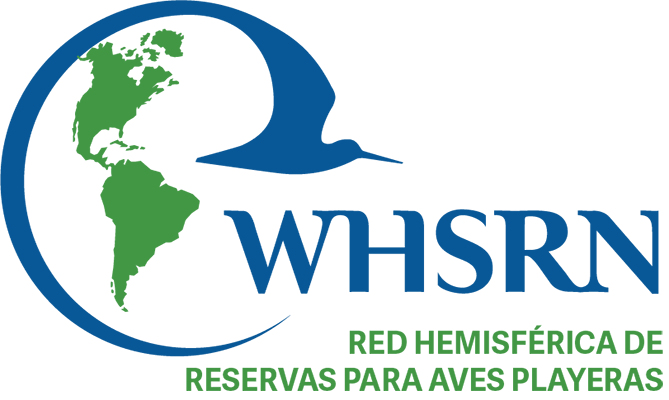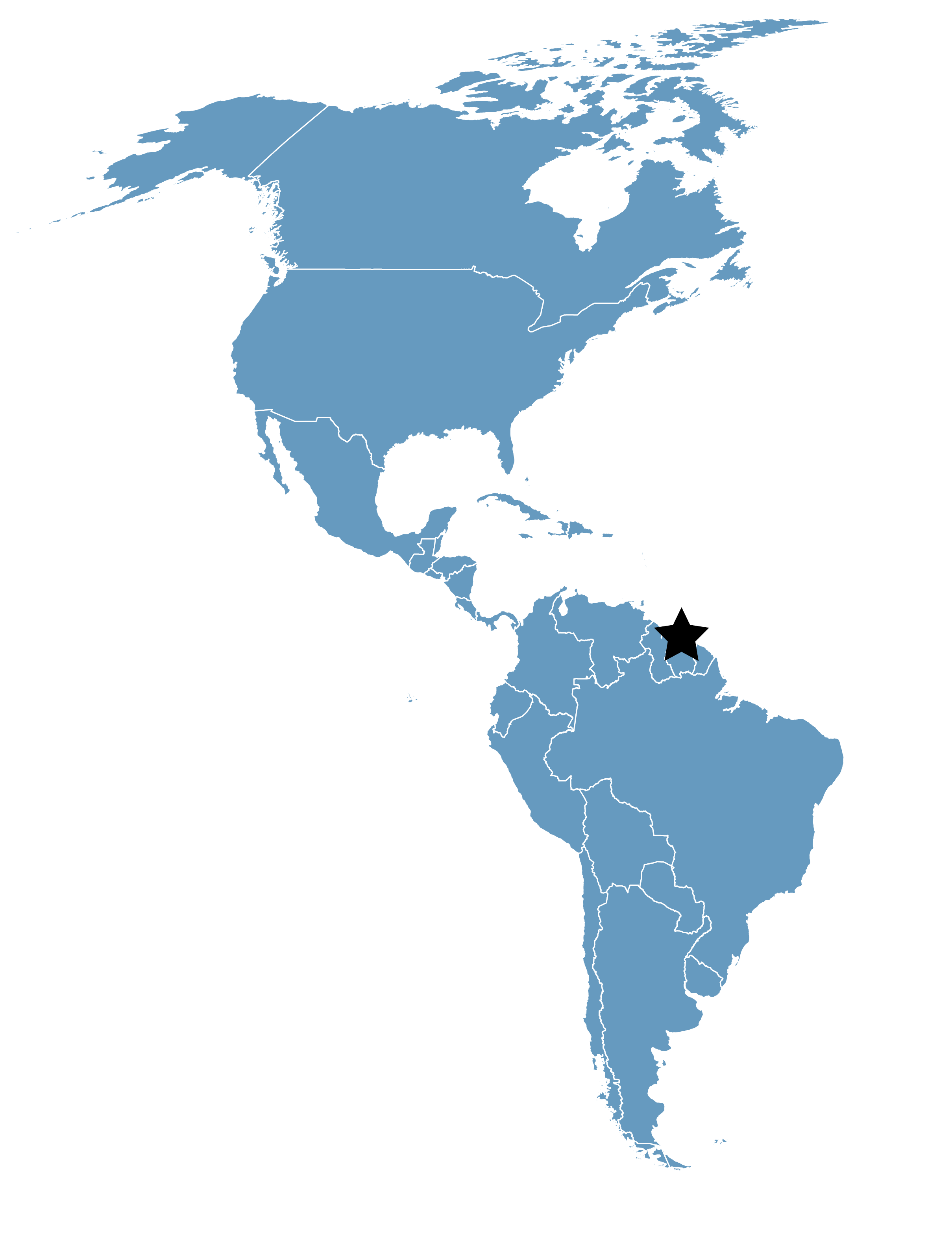Wia Wia
Location
Marowijne District, Suriname
Category
Hemispheric
Basis for Designation
Supports more than 500,000 shorebirds annually.
Size
36,000 hectares (88,958 acres)
Date Designated
March 1989
Site Owner
Ministry of Physical Planning, Land Use, & Forest Management (RGB by its Dutch acronym)
Overview
Wia Wia Nature Reserve in Commewijne District, Suriname is rich in mangroves and mudflats that support hundreds of thousands of migratory shorebirds each year—Semipalmated Sandpiper (Calidris pusilla) most abundantly. However, recent surveys by New Jersey Audubon Society and partners have found that the population wintering in northeastern South America has declined by as much as 80% in the last 30 years.
Wia Wia Nature Reserve is located on the Atlantic coast of Suriname near the Marowijne River. Shell and sand ridges run east to west, covered with mixed xerophytic coastal wood and forest, locally rich in cactus (Cereus hexagonus). Mud flats and scattered narrow beaches on the coast insulate black mangrove forests several kilometers wide. Further inland are brackish and freshwater grass swamps and permanent freshwater swamps. The area also has hydrophytic swamp wood forest.
Wia Wia Nature Reserve is known for high biological productivity. The reserve protects breeding and feeding grounds for large numbers of local and migratory bird species, and nursery grounds for fish and shrimp. It has a rich population of fish, shrimp, crabs, and other wildlife. Between the dry season and rainy season, water varies from hypersaline to fresh. The depth in most of the lagoons may vary up to 70 centimeters. The area is connected with the sea by several creeks.
The mudflats and the swamps are important for numerous migratory shorebirds breeding or stopping over in North America; more than 100,000 shorebirds have been counted during an aerial survey (fall 2004). It is also an Endemic Bird Area due to the common occurrence of three range-restricted species: Guyanan Piculet, Blood-colored Woodpecker, and Rufous Crabhawk.

This sign, in Dutch, translates to: “All shorebirds are protected by law. So don’t shoot or trap them, do not sell or buy them, do not prepare or eat them.” Photo: Meredith G. Morehouse.
Ecology and Conservation
Along the coast, there are mud flats and scattered narrow shell and sand beaches which are mainly covered with herb vegetation such as Canavalium maritima and Ipomoea pes-caprae. These are bordered by black mangrove forest (Avicennia germinans) running several kilometers wide. There are deep saltwater lagoons, which shelter submerged Ruppia maritime and/or Nymphaea ampla vegetation, and silted lagoons with halophytic herb vegetation with Sesuvium portulacastrum, Batis maritima, and Sporobolus virginicus.
Between the dry season and rainy season, the water varies from hypersaline to fresh. The depth in most lagoons is no more than 30 centimeters in the dry season and may reach approximately 70 centimeters in the rainy season. Large parts dry up completely during the long dry season, particularly those on the seaside.
The inland park contains black mangrove forests, brackish and freshwater short- and tall-grass swamps, and permanent freshwater swamps covered with Eleocharis mutata, Cyperus articulates, Leersia hexandr, Typha angustifolia,Machaerium lunatum, and Erythrina glauca.
The area has some hydrophytic swamp wood forest consisting of Pterocarpus officinalis and high hydrophytic swamp forest with Virola surinamensis, Symphonia globulifera, and Euterpe oleracea. On the coast, shell and sand ridges run east to west, covered with mixed xerophytic coastal wood and forest, locally rich in cactus (Cereus hexagonus). The area is connected with the sea by several creeks.
The mudflats and the swamps are important for numerous migratory shorebirds breeding or stopping over in North America. The area is used by 1% or more of the entire population of Semipalmated Sandpipers, Semipalmated Plovers, Short-billed Dowitchers, and likely also for both Greater and Lesser Yellowlegs (particularly the latter, considering their very serious decline). More than 100,000 shorebirds have been counted during an aerial survey in a single season in fall 2004. This reserve has sustained a multitude of birds annually and over the decades.
The beaches serve as important nesting grounds for five species of marine turtles: Dermochelys coreacea, Chelonia mydas, Eretmochelys imbricata, Lepidochelys olivacea, and Caretta caretta. Only the former two appear in significant numbers. White-tailed deer and jaguar are also present.

Wia Wia Nature Reserve. Photo: Arie Spaans.
Threats and Management
Because of the isolated location, poaching is not a big problem. At the moment there are no other threats, but it is likely that oil will be found south of the site in the near future. Development and drilling threaten the wildlife at the reserve and increase human activity.
Wia Wia Nature Reserve is under the jurisdiction of the Ministry for Planning, Land Use, and Forest Management (RGB by its Dutch acronym). It is managed by the Nature Conservation Division (NCD) within the Ministry’s Forest Service (LBB by its Dutch acronym).








